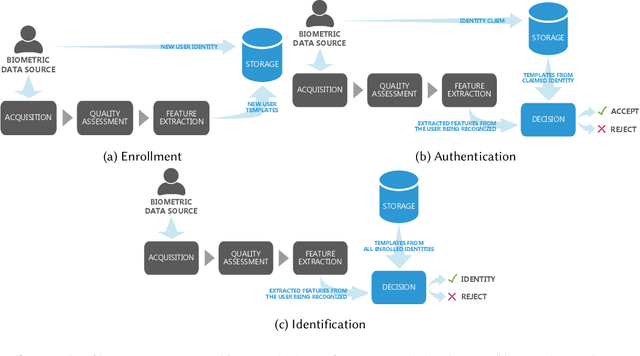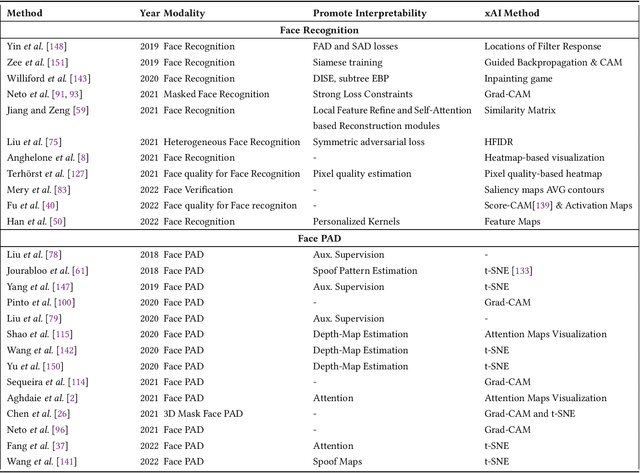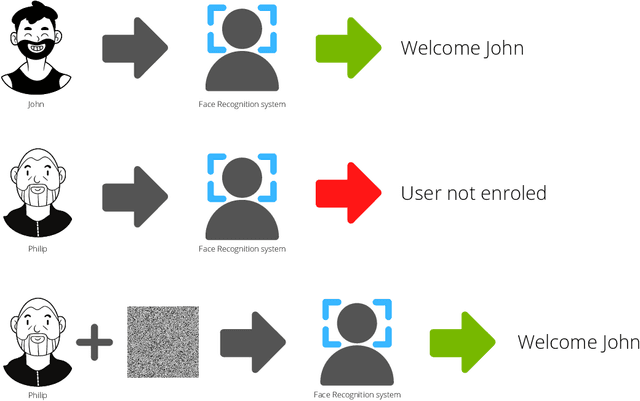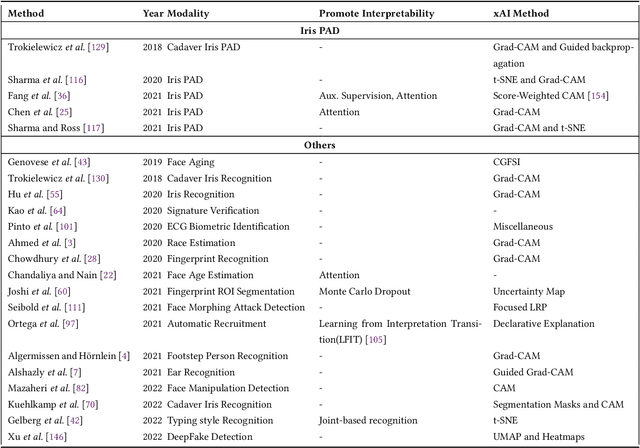Wilson Silva
Disentangled and Interpretable Multimodal Attention Fusion for Cancer Survival Prediction
Mar 20, 2025Abstract:To improve the prediction of cancer survival using whole-slide images and transcriptomics data, it is crucial to capture both modality-shared and modality-specific information. However, multimodal frameworks often entangle these representations, limiting interpretability and potentially suppressing discriminative features. To address this, we propose Disentangled and Interpretable Multimodal Attention Fusion (DIMAF), a multimodal framework that separates the intra- and inter-modal interactions within an attention-based fusion mechanism to learn distinct modality-specific and modality-shared representations. We introduce a loss based on Distance Correlation to promote disentanglement between these representations and integrate Shapley additive explanations to assess their relative contributions to survival prediction. We evaluate DIMAF on four public cancer survival datasets, achieving a relative average improvement of 1.85% in performance and 23.7% in disentanglement compared to current state-of-the-art multimodal models. Beyond improved performance, our interpretable framework enables a deeper exploration of the underlying interactions between and within modalities in cancer biology.
Towards Case-based Interpretability for Medical Federated Learning
Aug 24, 2024Abstract:We explore deep generative models to generate case-based explanations in a medical federated learning setting. Explaining AI model decisions through case-based interpretability is paramount to increasing trust and allowing widespread adoption of AI in clinical practice. However, medical AI training paradigms are shifting towards federated learning settings in order to comply with data protection regulations. In a federated scenario, past data is inaccessible to the current user. Thus, we use a deep generative model to generate synthetic examples that protect privacy and explain decisions. Our proof-of-concept focuses on pleural effusion diagnosis and uses publicly available Chest X-ray data.
Enhancing Cross-Modal Medical Image Segmentation through Compositionality
Aug 21, 2024Abstract:Cross-modal medical image segmentation presents a significant challenge, as different imaging modalities produce images with varying resolutions, contrasts, and appearances of anatomical structures. We introduce compositionality as an inductive bias in a cross-modal segmentation network to improve segmentation performance and interpretability while reducing complexity. The proposed network is an end-to-end cross-modal segmentation framework that enforces compositionality on the learned representations using learnable von Mises-Fisher kernels. These kernels facilitate content-style disentanglement in the learned representations, resulting in compositional content representations that are inherently interpretable and effectively disentangle different anatomical structures. The experimental results demonstrate enhanced segmentation performance and reduced computational costs on multiple medical datasets. Additionally, we demonstrate the interpretability of the learned compositional features. Code and checkpoints will be publicly available at: https://github.com/Trustworthy-AI-UU-NKI/Cross-Modal-Segmentation.
FedGS: Federated Gradient Scaling for Heterogeneous Medical Image Segmentation
Aug 21, 2024Abstract:Federated Learning (FL) in Deep Learning (DL)-automated medical image segmentation helps preserving privacy by enabling collaborative model training without sharing patient data. However, FL faces challenges with data heterogeneity among institutions, leading to suboptimal global models. Integrating Disentangled Representation Learning (DRL) in FL can enhance robustness by separating data into distinct representations. Existing DRL methods assume heterogeneity lies solely in style features, overlooking content-based variability like lesion size and shape. We propose FedGS, a novel FL aggregation method, to improve segmentation performance on small, under-represented targets while maintaining overall efficacy. FedGS demonstrates superior performance over FedAvg, particularly for small lesions, across PolypGen and LiTS datasets. The code and pre-trained checkpoints are available at the following link: https://github.com/Trustworthy-AI-UU-NKI/Federated-Learning-Disentanglement
Multi-task Learning Approach for Intracranial Hemorrhage Prognosis
Aug 16, 2024Abstract:Prognosis after intracranial hemorrhage (ICH) is influenced by a complex interplay between imaging and tabular data. Rapid and reliable prognosis are crucial for effective patient stratification and informed treatment decision-making. In this study, we aim to enhance image-based prognosis by learning a robust feature representation shared between prognosis and the clinical and demographic variables most highly correlated with it. Our approach mimics clinical decision-making by reinforcing the model to learn valuable prognostic data embedded in the image. We propose a 3D multi-task image model to predict prognosis, Glasgow Coma Scale and age, improving accuracy and interpretability. Our method outperforms current state-of-the-art baseline image models, and demonstrates superior performance in ICH prognosis compared to four board-certified neuroradiologists using only CT scans as input. We further validate our model with interpretability saliency maps. Code is available at https://github.com/MiriamCobo/MultitaskLearning_ICH_Prognosis.git.
Interpretability-guided Data Augmentation for Robust Segmentation in Multi-centre Colonoscopy Data
Aug 30, 2023Abstract:Multi-centre colonoscopy images from various medical centres exhibit distinct complicating factors and overlays that impact the image content, contingent on the specific acquisition centre. Existing Deep Segmentation networks struggle to achieve adequate generalizability in such data sets, and the currently available data augmentation methods do not effectively address these sources of data variability. As a solution, we introduce an innovative data augmentation approach centred on interpretability saliency maps, aimed at enhancing the generalizability of Deep Learning models within the realm of multi-centre colonoscopy image segmentation. The proposed augmentation technique demonstrates increased robustness across different segmentation models and domains. Thorough testing on a publicly available multi-centre dataset for polyp detection demonstrates the effectiveness and versatility of our approach, which is observed both in quantitative and qualitative results. The code is publicly available at: https://github.com/nki-radiology/interpretability_augmentation
Explainable Biometrics in the Age of Deep Learning
Aug 19, 2022



Abstract:Systems capable of analyzing and quantifying human physical or behavioral traits, known as biometrics systems, are growing in use and application variability. Since its evolution from handcrafted features and traditional machine learning to deep learning and automatic feature extraction, the performance of biometric systems increased to outstanding values. Nonetheless, the cost of this fast progression is still not understood. Due to its opacity, deep neural networks are difficult to understand and analyze, hence, hidden capacities or decisions motivated by the wrong motives are a potential risk. Researchers have started to pivot their focus towards the understanding of deep neural networks and the explanation of their predictions. In this paper, we provide a review of the current state of explainable biometrics based on the study of 47 papers and discuss comprehensively the direction in which this field should be developed.
Deep Aesthetic Assessment and Retrieval of Breast Cancer Treatment Outcomes
May 25, 2022Abstract:Treatments for breast cancer have continued to evolve and improve in recent years, resulting in a substantial increase in survival rates, with approximately 80\% of patients having a 10-year survival period. Given the serious impact that breast cancer treatments can have on a patient's body image, consequently affecting her self-confidence and sexual and intimate relationships, it is paramount to ensure that women receive the treatment that optimizes both survival and aesthetic outcomes. Currently, there is no gold standard for evaluating the aesthetic outcome of breast cancer treatment. In addition, there is no standard way to show patients the potential outcome of surgery. The presentation of similar cases from the past would be extremely important to manage women's expectations of the possible outcome. In this work, we propose a deep neural network to perform the aesthetic evaluation. As a proof-of-concept, we focus on a binary aesthetic evaluation. Besides its use for classification, this deep neural network can also be used to find the most similar past cases by searching for nearest neighbours in the highly semantic space before classification. We performed the experiments on a dataset consisting of 143 photos of women after conservative treatment for breast cancer. The results for accuracy and balanced accuracy showed the superior performance of our proposed model compared to the state of the art in aesthetic evaluation of breast cancer treatments. In addition, the model showed a good ability to retrieve similar previous cases, with the retrieved cases having the same or adjacent class (in the 4-class setting) and having similar types of asymmetry. Finally, a qualitative interpretability assessment was also performed to analyse the robustness and trustworthiness of the model.
 Add to Chrome
Add to Chrome Add to Firefox
Add to Firefox Add to Edge
Add to Edge